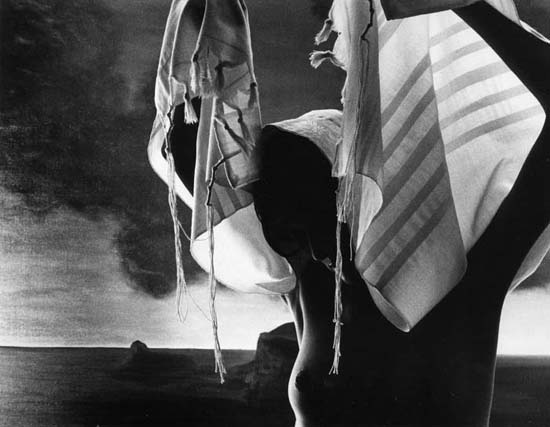
Shekhina is the Talmudic term for
the visible and audible manifestations of the Deity's presence on
Earth. Over time, Shekhina came to represent much more — a softer,
empathetic feminine counterpart to God who could argue for humanity's
sake, comfort the poor and sick, and stand as the mother of Israel.
Nimoy's first encounter with the mystique of Shekhina began in
synagogue at the age of 8. "The men were chanting, shouting and praying
in an Orthodox service. It was very passionate, very theatrical," said
Nimoy. His father told him not to look, as the worshippers averted
their eyes during blessings recited by the kohanim, or descendants of
the priestly class. "I was chilled by the whole thing," he said. Years
later Nimoy's rabbi explained to him that the entry of Shekhina into
the sanctuary to bless the congregation could cast a fatally blinding
light. Such a powerful memory inspired the actor/photographer to
explore the feminine aspect of God in human form, including the issues
of sensuality and sexuality.
To Nimoy, sexuality and spirituality are not segregated. "There are signs throughout the writings and history of Judaism that sexuality has always been a strong part of the teaching and culture of religious practice," said Nimoy, citing the examples of the Friday night bath to cleanse before sex and the teachings of the Kabbalists.
To Nimoy, sexuality and spirituality are not segregated. "There are signs throughout the writings and history of Judaism that sexuality has always been a strong part of the teaching and culture of religious practice," said Nimoy, citing the examples of the Friday night bath to cleanse before sex and the teachings of the Kabbalists.